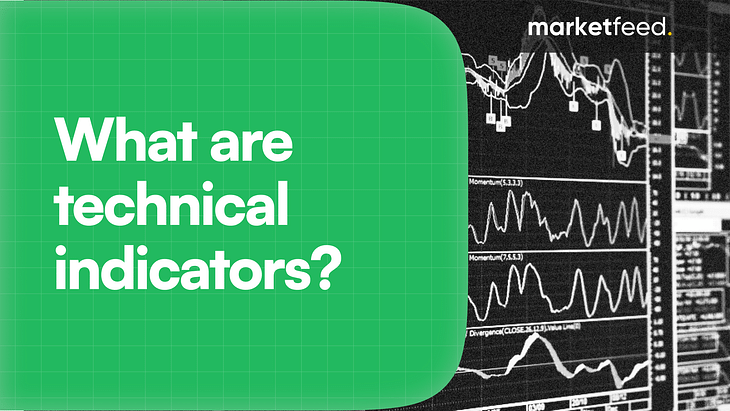What are Technical Indicators: Definitions and Types?

Becoming an amazing trader requires mastering price action and technical indicators. This article provides a basic understanding of technical indicators, including what they are, how to plot them, the different types available, and some tips on how to use them effectively.
When it comes to trading, there are three different groups of traders with different approaches to trading. The first group uses only price action, the second group uses only technical indicators and the last group uses both price action and technical indicators.
The debate of price action vs indicators has been going on for a really long time. However, you must find your balance between the two of them to find high-probability trades and make money.
What is a Technical Indicator?
Technical indicators are mathematical tools or calculations derived from a security's historical price and volume data. It includes intelligent analysis of the historical price and volume data to predict future price movement, which can be done in two ways: price action-based method and through technical indicators.
Technical indicators are more advanced than price action methods as they use mathematical calculations to make predictions about a stock's future movement. For example, using the average of a player's historical performance to predict their future performance is similar to using technical indicators to predict future price movements.
Types of Technical Indicators
Technical indicators can be classified into three main categories based on:
(1) Where they are plotted
Indicators are categorised into two groups based on their placement on a chart:
- Overlays are plotted over the price in a chart. For example, Moving averages and Bollinger bands are overlays.
- Underlays are plotted below the price in a chart. For example, RSI and Stochastics are underlays.
In the above chart,
- The moving average indicator has been plotted on the price, thus making it an overlay.
- The MACD indicator has been plotted under the price chart, thus making it an underlay.
(2) When do they indicate
Indicators are separated into two groups based on when they indicate:
- Lagging indicators give signals after a trend or reversal has started. They follow the price action and are used for confirming trends or reversals. For example, Moving averages and Bollinger bands are lagging indicators.
- Leading indicators give signals even before the trend/movement has begun. For example, RSI and Stochastics are leading indicators.
(3) What do they indicate?
Indicators are separated into four groups based on when they indicate:
- Trend indicators are used to confirm the trend and measure the direction and strength of the trend. For example, Moving averages and MACD.
- Momentum indicators are used to determine the strength or weakness of the price movement. For example, Stochastics and RSI.
- Volatility indicators measure the price range and the periods of high and low volatility. For example, ATR and Bollinger bands.
- Volume indicators measure trend strength & confirm it with the help of volume. Trends are stronger when volume indicators give confirmation. For example, volume chart and OBV.
How to Access Indicators?
In TradingView,
- Click on the indicators menu on the top panel to open the indicators search bar.
- Search the required indicator and select it.
- The indicator will be plotted on the chart.
You can also hide/unhide indicators by clicking on the eye button next to the indicator name on the top left side of the chart under the scrip name. This is helpful as you can hide/unhide indicators depending on your trading setup and don't have to remove and add an indicator every time you need it.
Things to Keep in Mind While Using Technical Indicators
- In reality, there are no perfect indicators when it comes to trading.
- Traders need to find a combination of technical indicators that work for them in their analysis.
- Overusing indicators and relying solely on them can lead to a cluttered chart and inaccurate analysis.
- Different indicators may work well for different stocks or indices, so it's important to understand what works best for each security and situation.
- It's crucial to understand that indicators will not give a true understanding of the market and that price action analysis should also be incorporated.
In this article, we covered the basics of technical indicators! These indicators act as insightful guides for traders, helping them navigate the dynamic landscape of market trends and potential reversals. As you venture into the world of stocks, let these tools be your allies, providing valuable signals to enhance your trading strategy. Happy trading!


Post your comment
No comments to display